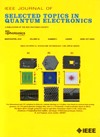Submission Deadline: October 1 (Thu), 2020
Hard Copy Publication: July/August, 2021
Call for Papers
Service providers have made it clear that they are looking beyond physical capabilities when selecting their networking ecosystems. The network’s ability to collect, aggregate and analyze performance metrics, and take action in response to this data analysis is of growing importance, with an increased emphasis on streaming telemetry rather than legacy polling techniques. In contrast to network attributes such as transmission capacity where growth has been slowed by physical realities, advancements in monitoring and processing capabilities have accelerated the potential use of telemetry to drive network operation. The challenge is to hone the effort and harness the tracked data to maximize the advantages that can be obtained. To more fully investigate these challenges, this special issue is focused on the intelligent use of monitoring and telemetry to control and manage optical networks.
While increased monitoring potentially exposes an array of performance metrics, data explosion is a prime concern. Solutions must remain scalable; it is essential to determine which telemetric data can be most effective in network management, whether it be automating common tasks or driving new and advanced applications. Other fundamental considerations are the monitoring frequency and where the data should be collected and/or analyzed (e.g., distributed at the network elements or more centralized), and the ensuing ramifications for communication/processing burden and optimality.
The ultimate goal, of course, is taking full advantage of the collected telemetric data. One can envision a wide range of applications. For example, it is natural for monitoring to become an integral part of a software-defined network to drive automation. Performance data can be tracked for purposes of failure prediction, to enable pro-active mitigation prior to connection failure. Similarly, monitoring can be used to provide advance warning of potential network-element misconfiguration. Telemetry from multiple networking layers or domains can be synthesized to achieve efficient multi-layer/multi-domain control. Data anomalies can be used to detect a security breach. It is also worthwhile to consider advanced monitoring that may be needed in the future to more fully reap the operational benefits.
The scope of the special issue includes but is not limited to the following topics:
Advanced biophotonics imaging, sensing and diagnostic methods and systems
• Emerging biophotonics imaging techniques including cellular/intracellular, molecular, 3D endoscopic, translational clinical, photoacoustic,
photothermal, diffuse, phase-sensitive, OCT, confocal, terahertz, machine learning, microscopic and multi-photon in-vivo bioimaging
• Spectroscopy-based diagnostics including fluorescence, Raman, elastic scattering, evanescence-wave, near-/mid-IR spectroscopy
• Novel biophotonics sensing techniques
• Multi-modal biophotonics diagnostics
Progress in minimally-invasive biophotonics therapeutic techniques
• Ultrashort pulse laser tissue therapeutics
• Precise laser tissue manipulation in ophthalmology, dentistry, dermatology, cardiology, neurosurgery, photodynamic cancer therapy
• Robotic and imaging guided targeted laser surgery
• Novel photobiomodulation therapeutic techniques and dominant light-tissue-interaction mechanisms at cellular and tissue level
• Light-assisted nerve and neuron-growth stimulation, cellular/tissue repair, optogenetics, photoimmunotherapy
• Optical and laser radiation safety evaluation and dosimetry
Development of novel laser, fiber-optic and electro-optic biophotonics tools and devices

